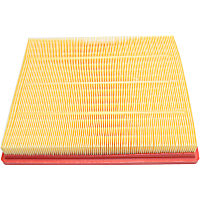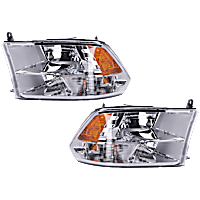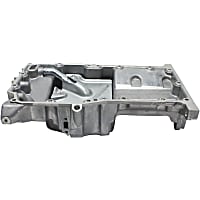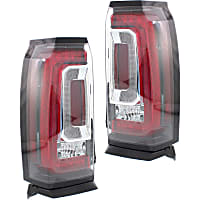One of the worst things that could happen to a vehicle is getting flooded. Water can quickly rise during a hurricane and leave parked vehicles submerged–potentially damaging expensive components and systems. . In some cases, the flooded car would be considered too costly to repair.
While no one wants their vehicle to be flooded, it’s important to know what to do in case this happens to you.
Wait for the floodwater to recede
Regardless of how much your vehicle means to you, remember that it can be replaced, and your safety should be the top priority. Do not attempt to access your vehicle until it is safe to do so.
Survey the potential damage
The extent of the damage will vary depending on the floodwater level and your vehicle’s wading depth. Mud or debris residue may help you determine how high the water has crept up on your vehicle from the outside.

If the water reached the cabin , the car is usually considered a total loss. That’s because the water has most likely reached most of the electrical wiring and components of the vehicle. If the water rose a little higher, then the water has likely reached the engine.
Do not attempt to start the engine
Some people’s first instinct may be to check if the engine is still running by impulsively starting the vehicle. This is the last thing you want to do because it can possibly damage your car to a point where it becomes unsalvageable.
Even if you think your car is still drivable, it’s best not to risk it. Your insurer will likely send in a tow truck and have it transported to a qualified mechanic. Driving it with existing flood damage will only make things worse for your vehicle.
Call your insurance company and review your policy
Make sure to contact your insurance company as soon as possible. They will likely receive an overwhelming number of calls around the time of a wide-spread calamity.

Flood damage is usually covered by a comprehensive insurance policy. The insurance company will send an assessor, sometimes accompanied by a mechanic, to assess the extent of damage on your vehicle. The agent can declare your car a total loss if the total repair cost is more expensive than the vehicle’s worth.
Use Rags or a Wet Vacuum to Dry the Interior
It’s important to get as much moisture out of your vehicle to avoid damaging trimmings and electrical wiring. Prolonged water exposure causes mold to grow and spread in the cabin, which is unhealthy for the occupants of the vehicle.
Remove standing water and moisture inside the cabin using a wet/dry vacuum. Soak up water from seats and cushions using rags and towels. You may also use a dehumidifier to get rid of the excess moisture in your vehicle.
Other materials like seat covers, floor mats, and carpets are likely to deteriorate over time, so consider replacing them. If the water damage is minimal, you can try to dry them by hanging them near a heater.
Here are some of the things your mechanic will check during inspection:

Check the oil and air filters
If the oil pan underneath your vehicle has worn gaskets, water can easily enter and mix with the oil. A simple way of checking if there’s water mixed in your oil is to check your engine oil level. If the dipstick shows a higher oil level than the last time you checked, it’s likely that water is present.
Most modern vehicles have engine air intakes at the front of the car. Checking the air filter will help them determine whether water entered through the intake and flooded the engine cylinders.
Check the fuel tank and line
The mechanic may siphon some fuel to check if water is present in the fuel system. If the fuel is contaminated, the system will be drained completely.
Inspect the other vehicle fluids
Aside from the oil and air filter, they will also check the reservoirs containing the brake fluid, power steering, coolant, and transmission fluid.
Contamination of these fluids will likely cause various systems and major vehicle components to malfunction, which can be expensive to replace.

Check for electrical system damage
If the mechanic determines that your engine and fluid reservoirs are free from water contamination, they will check your vehicle’s electrical system and switch your engine on.
They will need to make sure the headlights, fog lights, turn indicators, and tail lights are working. They will also check the air conditioning, radio, power features like power windows, locks, seats, and cabin ambient lights for any signs of system failure.
Can Flood Damage on Cars be Repaired?
A certified mechanic will be able to determine whether or not your vehicle can be repaired. The extent of the damage will vary depending on how high the water got and how long your vehicle stood in floodwater.
What Happens If My Flooded Car Is Declared a Total Loss?
If your vehicle is declared a total loss/non-repairable by the insurance company, you can either choose to take the insurance settlement in its entirety or buy the vehicle back from the insurance company and get a salvage title from the DMV. If at a later time it is repaired and you want to drive it again, it must pass a state inspection before a rebuilt title is issued.
Getting a rebuilt vehicle insured may prove difficult. Even if your vehicle becomes roadworthy again, the incidence of flood damage will not be removed from your vehicle history.
If you plan on buying a used car with your insurance settlement, make sure to get one with a clean title to save yourself from future headaches.
Products Mentioned in this Guide
Any information provided on this Website is for informational purposes only and is not intended to replace consultation with a professional mechanic. The accuracy and timeliness of the information may change from the time of publication.


 Air Filter
Air Filter
 Brake Fluid
Brake Fluid
 Headlight
Headlight
 Oil Pan
Oil Pan
 Floor Mats
Floor Mats
 Tail Light
Tail Light


















